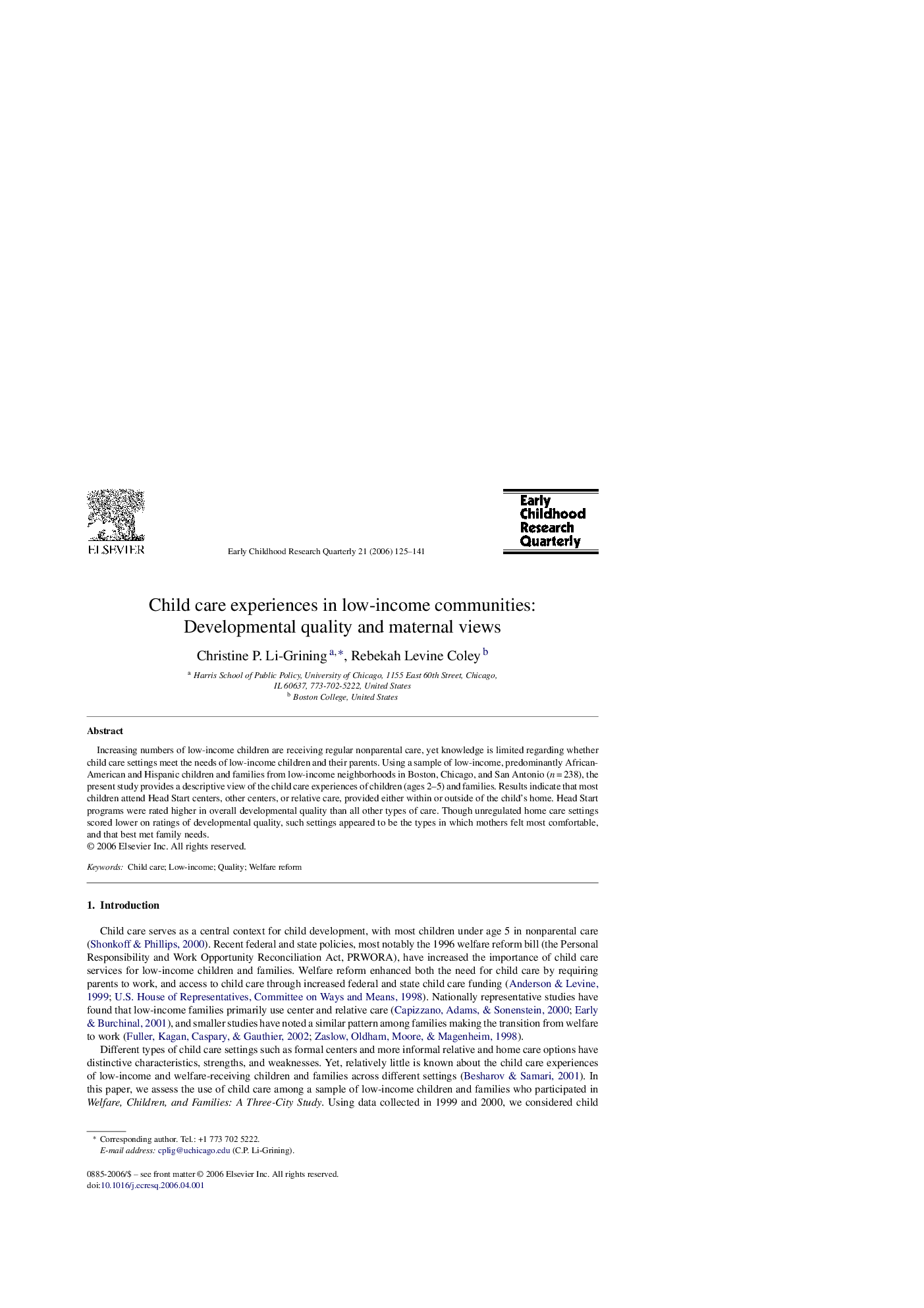| Article ID | Journal | Published Year | Pages | File Type |
|---|---|---|---|---|
| 354174 | Early Childhood Research Quarterly | 2006 | 17 Pages |
Increasing numbers of low-income children are receiving regular nonparental care, yet knowledge is limited regarding whether child care settings meet the needs of low-income children and their parents. Using a sample of low-income, predominantly African-American and Hispanic children and families from low-income neighborhoods in Boston, Chicago, and San Antonio (n = 238), the present study provides a descriptive view of the child care experiences of children (ages 2–5) and families. Results indicate that most children attend Head Start centers, other centers, or relative care, provided either within or outside of the child's home. Head Start programs were rated higher in overall developmental quality than all other types of care. Though unregulated home care settings scored lower on ratings of developmental quality, such settings appeared to be the types in which mothers felt most comfortable, and that best met family needs.
